- Home
- Orhan Pamuk
The Museum of Innocence Page 60
The Museum of Innocence Read online
Page 60
All the presents I’d brought her over the years—the combs and brushes and little mirrors, and butterfly brooches and earrings—she had arranged in the drawers of the little cabinets. There were things I had forgotten ever having given her—socks for the tombala sack, the wooden buttons I had thought I was buying for her mother, hair clips, as well as the toy Mustang Turgay had given her, and the love letters I had sent via Ceyda—to find these artifacts weighed on me so that I could never linger more than half an hour among these drawers and cupboards that still bore her scent. Sometimes I would sit on the bed and relax with a cigarette, sometimes, to stem my tears, I would stand at the window, or on one of the balconies on which she had painted her birds, before picking up a sock or a comb or two to take away with me.
By this time I had realized that I would have to find a place to gather together all the objects that connected me to Füsun, from the first things collected on impulse to the items now retrieved so deliberatively from her room—perhaps the entire contents of the house—but I had no idea where such a place could be. It was only after I had begun my travels, visting the world’s smaller museums one by one, that I could at last answer this question, and understand its full significance.
One snowy evening during the winter of 1986, when we had finished our supper, I was sifting through the butterfly brooches, earrings, and pins that I’d bought for Füsun over all those years, though to no avail, when I happened on a box at the back of a drawer, and within it I found the pair of butterfly-shaped earrings, each bearing the initial F, that she had been wearing at the time of the accident, despite having insisted for years that she’d lost one of them. I took the earrings and went downstairs.
“Aunt Nesibe, these seem to have been put into Füsun’s jewelry box very recently,” I said.
“Kemal, my boy, whatever Füsun was wearing that day—her red dress, her shoes, everything—I hid from you, because I didn’t want to add to your grief. Then I said to myself that I’d better put them where they belonged, and here you have noticed at once.”
“Was she wearing both the earrings?”
“Before she went to your room that evening, my darling girl was still planning to come sleep in our room. I was just pretending to be asleep, when suddenly she pulled these earrings from her handbag and put them on. When she left the room, I said nothing. I wanted you to be happy at long last.”
I had never told Aunt Nesibe that Füsun had told me her mother had locked the door.
How could I have failed to notice the earrings as we were making love? Then another question occurred to me.
“Aunt Nesibe, years ago I told you that I’d left one of these earrings by the mirror in the bathroom, the very first time I visited this house. I even asked you, ‘Have you seen them?’”
“I have no idea, my son. Don’t delve into these things and make me cry. I do remember that she wanted to surprise you by putting on a certain pair of earrings in Paris—she had said something like that, but I never knew which earrings she meant. Ah, she so wanted to see Paris, my dear Füsun.”
Aunt Nesibe began to cry, for which, afterward, she apologized.
The next day I booked a room at the Hôtel du Nord. In the evening I told my mother that I was leaving for Paris, that a trip would do me good.
“Oh, I’m so glad,” said my mother. “And you can do some good for the business, for Satsat. Your brother shouldn’t take over everything.”
81
The Museum of Innocence
I HAD NOT said, This trip to Paris is not on business, Mother. For if she’d asked my reason, I could not have offered her a proper answer, having concealed the purpose even from myself. As I left for the airport, I considered my journey in some sense the atonement I had obsessively sought for my sins, among them, my having failed to notice Füsun’s earring.
But as soon as I had boarded the plane, I realized that I had set out on this voyage both to forget and to dream. Every corner of Istanbul was teeming with reminders of her. The moment we were airborne, I noticed that outside Istanbul, I was able to think about Füsun and our story more profoundly. In Istanbul I’d always seen Füsun through the prism of my obsession; but in the plane I could see my obsession, and Füsun, from the outside.
I felt such consolation, the same deep understanding, as I wandered idly around museums. I do not mean the Louvre or the Beaubourg, or the other crowded, ostentatious ones of that ilk; I am speaking now of the many empty museums I found in Paris, the collections that no one ever visits. There was the Musée Édith Piaf, founded by a great admirer, where by appointment I viewed hairbrushes, combs, and teddy bears; and the Musée de la Préfecture de Police, where I spent an entire day; and the Musée Jacquemart-André, where other objects were arranged alongside paintings in a most original way—I saw empty chairs, chandeliers, and haunting unfurnished spaces there. Whenever wandering alone through museums like this, I felt myself uplifted. I would find a room at the back, far from the gaze of the guards who paid close attention to my every step; as the sound of traffic and construction and the urban din filtered in from outside, it was as if I had entered a separate realm that coexisted with the city’s crowded streets but was not of them; and in the eerie timelessness of this other universe, I would find solace.
Sometimes, thus consoled, I would imagine it possible for me to frame my collection with a story, and I would dream happily of a museum where I could display my life—the life that first my mother, and then Osman, and finally everyone else thought I had wasted—where I could tell my story through the things that Füsun had left behind, as a lesson to us all.
On visiting the Musée Nissim de Camondo, whose founder I knew to have come from one of Istanbul’s most prominent Jewish families, I was emboldened to believe that in the Keskins’ set of plates, forks, knives, and my seven-year collection of saltshakers, I, too, could have something worthy of proud display, and the notion set me free. The Musée de la Poste made me realize I could display the letters I had written to her, and the Micromusée du Service des Objets Trouvés legitimated the inclusion of a wide range of things, so long as they reminded me of Füsun, for example, Tarık Bey’s false teeth, empty medicine boxes, and receipts. It took me an hour in a taxi to reach the Musée Maurice Ravel, formerly the famous composer’s house, and when I saw his toothbrush, coffee cups, china figurines, various dolls, toys, and an iron cage that immediately called to mind Lemon, with an iron nightingale singing within it, I very nearly wept. To stroll through these Paris museums was to be released from the shame of my collection at the Merhamet Apartments. No longer an oddball embarrassed by the things he had hoarded, I was gradually awakening to the pride of a collector.
I did not, however, invoke such concepts at that time, gauging my spiritual alteration instead by the simple awareness that I felt happy the moment I entered one of these places, and began to dream of telling my story through objects. One evening while drinking alone in the bar of the Hôtel du Nord, gazing at the strangers around me, I caught myself asking the questions that occur to every Turk who goes abroad (if he has some education and a bit of money): What did these Europeans think about me? What did they think about us all?
Eventually I thought about how I might describe what Füsun meant to me to someone who knew nothing about Istanbul, Nişantaşı, or Çukurcuma. I was coming to see myself as someone who had traveled to distant countries and remained there for many years: say, an anthropologist who had fallen in love with a native girl while living among the indigenous folk of New Zealand, to study and catalog their habits and rituals, how they worked and relaxed, and had fun (and chatted away even while watching television, I must hasten to add). My observations and the love I had lived had become intertwined.
Now the only way I could ever hope to make sense of those years was to display all that I had gathered together—the pots and pans, the trinkets, the clothes and the paintings—just as that anthropologist might have done.
During my last days in Paris, with Füsu
n’s birds on my mind, and a bit of time to kill, I went to the Musée Gustave Moreau, because Proust had held this painter in such high esteem. I couldn’t bring myself to like Moreau’s classical, mannered, historical paintings, but I liked the museum. In his final years, the painter Moreau had set about changing the family house where he had spent most of his life into a place where his thousands of paintings might be displayed after his death, and this house in due course became a museum, which encompassed as well his large two-story atelier, right next to it. Once converted, the house became a house of memories, a “sentimental museum” in which every object shimmered with meaning. As I walked through empty rooms, across creaking parquet floors, and past dozing guards, I was seized by a passion that I might almost call religious. (I would visit this museum seven more times over the next twenty years, and each time as I walked slowly through its rooms I felt the same awe.)
On returning to Istanbul, I went directly to see Aunt Nesibe. After telling her about Paris and its museums, and sitting down to eat, I went straight to the matter foremost in my mind.
“You know that I’ve been taking away things from this house, Aunt Nesibe,” I said, with the ease of a patient who can at last smile about an illness he was cured of long ago. “Now I’d like to buy the house itself—the entire building.”
“What do you mean?”
“I’d like you to sell me the house and all its contents.”
“But what will happen to me?”
We talked it through in a way that was only half serious. I spoke almost ceremoniously: “I would like to find a way to commemorate Füsun in this house.” I also suggested to Aunt Nesibe that she would not be happy in this house, lighting the stove on her own, though, if it was her wish, she could stay. Aunt Nesibe cried for a time at the thought of spending her life alone. But then I told her that I had found her an excellent apartment in Nişantaşı, on Kuyulu Bostan Street, where she’d once lived.
“Which building is it in?” she asked.
A month later we’d bought Aunt Nesibe a big apartment in the nicest part of Kuyulu Bostan Street, just a little way beyond her former apartment (and right across the street from the tobacconist, the newsagent, and the shop owned by Uncle Sleaze the child molester). She deeded to me the whole building in Çukurcuma, including the ground-floor flat and all the movables. On the advice of my lawyer friend who had handled Füsun’s divorce, we made an inventory of the building’s entire contents and had the document duly notarized.
Aunt Nesibe was in no hurry to move to her new home in Nişantaşı. With my assistance, she had new lighting installed and bought furniture as carefully as a girl might build her trousseau, and every time we saw each other she would tell me with a smile that there was no hope of her ever being able to leave the house in Çukurcuma.
“Kemal, my son, I can’t leave this house and all its memories. What are we to do?” she would say.
“We will turn the house into a place where we can display our memories, Aunt Nesibe,” I would reply.
As my journeys gradually became longer, I saw her less often. Because I still did not really know what to do with the house, its contents, and all those things of Füsun’s, which were so precious to me I hardly dared to look at them, for fear my gaze might do them harm.
My visit to Paris served as the model for my subsequent travels. On arriving in a new city I would move into the old but comfortable and centrally located hotel that I had booked from Istanbul, and armed with the knowledge acquired from the books and guides read in advance, I would begin my rounds of the city’s most noteworthy museums, never rushing, never skipping a single one, like a student meticulously completing an assignment. And then I would scan the flea markets, the shops selling trinkets and knickknacks, a few antique dealers; if I happened on a saltshaker, an ashtray, or a bottle opener identical to one I’d seen in the Keskin household, or if anything else struck my fancy, I would buy it. No matter where I was—Rio di Janeiro, Hamburg, Baku, Kyoto, or Lisbon—at suppertime I would take a long walk through the backstreets and far-flung neighborhoods; peering through the windows, I would search out rooms with families eating in front of the television, mothers cooking in kitchens that also served as dining rooms, children and fathers, young women with their disappointing husbands, and even the rich distant relations secretly in love with the girl in the house.
In the morning, after a leisurely breakfast at the hotel, I would kill time on the avenues and in the cafés until the little museums had opened; I’d write postcards to my mother and Aunt Nesibe, peruse the local papers, trying to figure out what had happened in Istanbul and the world, and at eleven o’clock I would pick up my notebook and set out hopefully on the day’s program.
One cold and rainy day, while walking through the galleries of the Helsinki City Museum, I happened on just the sort of medicine bottles I’d found in Tarık Bey’s drawers. Prowling the mildewy rooms of a museum in the small city of Cazelles, near Lyon in France (a converted former hat factory with no visitors but me), I saw hats exactly like those my mother and father had once worn. As I was viewing the playing cards, rings, necklaces, chess sets, and oil paintings of the State Museum of Württemberg, located in a tower of the old castle in Stuttgart, I was inspired by the belief that the Keskins’ possessions (like my love for Füsun) deserved display in comparable splendor. The smallest detail demanded the most exacting investigation: I spent an entire day in the Musée International de la Parfumerie in the South of France, some distance from the Mediterranean, in Grasse, the world capital of perfume, struggling to identify Füsun’s scent. At Munich’s Alte Pinakothek (whose stairs would serve as a model for those in my own museum) the sight of Rembrandt’s masterpiece The Sacrifice of Abraham reminded me of having told Füsun this story many years earlier, and of the moral of giving up the thing most precious to us while expecting nothing in return. I gazed at length at George Sand’s lighter, her jewels, her earrings, and locks of her hair, which were stapled to a piece of paper, until there, in the Musée de la Vie Romantique in Paris, I shivered. In the Göteborgs Historiska Museum, which narrates the history of that city, I sat patiently before the china tiles and plates imported by the East India Company. In March 1987 a suggestion by a former classmate now working at the Turkish Embassy in Oslo brought me to the Brevik Town Museum; on finding it closed, I went back to Oslo for the night, returning the next day to view the exhibits, which included a three-hundred-year-old post office, a photographer’s studio, and an old pharmacy. It was in Trieste, where the Civico Museo del Mare is housed in an old prison, that I first realized what many other museums would remind me of: being awash with memories of Füsun, the Bosphorus ferries (for example, the Kalender) would need to be represented by some model alongside other totems of my obsession. In Honduras, for which I had a hard time acquiring a visa, the Museum of Insects and Butterflies in La Ceiba, where I walked among tourists in shorts, led me to imagine that I could display all the butterfly barrettes I’d bought for Füsun over the years as if they were real butterflies; and that, by extension, I could organize and show all the mosquitoes, blackflies, horseflies, and other insects from the Keskin household. In the Chinese city of Hangzhou, in the Museum of Chinese Medicine, I felt that I had come face-to-face with one of Tarık Bey’s very own medicine boxes. I would note with pride at the Musée du Tabac, just opened in Paris, that its collection was not nearly as extensive as the one I had built up over eight years. One bright spring day in Aix-en-Provence, I remember gazing with boundless happiness and admiration upon the shelves of pots and pans and other objects in the sun-drenched rooms of the Musée de l’Atelier de Paul Cézanne. At the pristine and perfectly maintained Rockox House in Antwerp I had occasion to remember that in small museum houses the past is preserved within objects as souls are kept in their earthen bodies, and in that awareness I found a consoling beauty that bound me to life. But still I wonder if I could ever have learned to appreciate my own collection in the Merhamet Apartments, let alone nurtured an
y hope of showing it proudly to others, had I not first gone to Vienna to see the Sigmund Freud Museum, crammed with the statues and the furniture of the famous psychoanalyst. Was a visit to the old barbershop in the Museum of London on every London trip during my first traveling years merely an expression of nostalgia for my Istanbul barbers, Basri and Cevat the Chatterbox, or something more? At the Florence Nightingale Museum, housed in a London hospital, I was hoping to find a painting or an object that the famous nurse had brought back from Istanbul, where she’d run a hospital during the Crimean War, but the memento I found was not just from Istanbul—it was a barrette identical to one of Füsun’s. In the Musée de Temps in Besançon, France, formerly a palace, as I wandered among the clocks, listening to the deep silence, I thought about museums and time. In Holland, gazing at the minerals, fossils, medals, coins, and old utensils in the old wood-framed display cupboards, amid the silence of the Teylers Museum in Haarlem, I had an intimation that I would be able to say what it was that gave life meaning, and offered me the greatest solace, but as with the first blush of love, I couldn’t at first express what bound me to such places. In Madras, at the Fort St. George Museum, situated in the first fort built by the English in India, it was hot and very humid; and as I stood beneath an overhead fan, surrounded by letters, oil paintings, coins, and everyday objects, I felt the same elation. It was while strolling through the Castelvecchio Museum in Verona, ascending its staircases to marvel at how the architect Carlo Scarpa had arranged for the light to drape like silk over the statues, that I first came to understand how my pure contentment flowed not just from these museums as collections, but from the harmony in the arrangement of their pictures and objects. But it was not until I visited the Museum der Dinge in Berlin, once accommodated in the Martin Gropius Building and later made homeless, that I saw this truth another way: One could gather up anything and everything, with wit and acumen, out of a positive need to collect all objects connecting us to our most beloved, every aspect of their being, and even in the absence of a house, a proper museum, the poetry of our collection would be home enough for its objects. When I first set eyes on Caravaggio’s The Sacrifice of Isaac at the Uffizi in Florence, first tears came to my eyes, at the thought of never having had the chance to see this painting with Füsun, and then I saw in the painting that the unremarked lesson of Abraham’s sacrifice was that it is possible to substitute for one’s most cherished object another, and that this was why I felt so attached to the things of Füsun’s that I had collected over the years. Every time I went to London I visited Sir John Soane’s Museum; after walking through its gorgeously cluttered, crowded rooms and admiring his arrangement of the paintings, I would sit alone in a corner, listening for many hours to the noise of the city, thinking that one day I would exhibit Füsun’s things in just this way, and that when I did, she would smile down on me from the realm of the angels. But not until I found myself in the sentimental collection which was on the top floor of the Museu Frederic Marès in Barcelona, perusing its romantic assortment of barrettes, pins, earrings, playing cards, keys, fans, perfume bottles, handkerchiefs, brooches, necklaces, handbags, and bracelets, did I realize at last what I could do with Füsun’s things. And on my first tour of America—where I spent more than five months visiting 273 museums—I recalled that same emotional experience while visiting New York’s Glove Museum. Then at the Museum of Jurassic Technology in Culver City, California, I remembered again why some museums had the power to make me shudder: They induced the feeling that I had become suspended in one age while the rest of humanity lived in another. In the town of Smith-field, North Carolina, at the Ava Gardner Museum, from which I stole a charming exhibition plaque reproducing a tableware advertisement in which she appeared, at the sight of Ava’s yearbook picture, her nightgowns, her mittens, and her boots, I so ached for my lost Füsun that I very nearly aborted my journey and returned to Istanbul. Fortunately, after two days of studying the collection of soda and beer cans at the recently opened and soon to close Museum of Beverage Containers and Advertising near Nashville, while still longing to go home, I found the will to carry on. It was five weeks later, in Saint Augustine, Florida, at the (soon to close) Tragedy in U.S. History Museum, where, upon seeing the chrome-plated gauges and the rusting, crumpled wreck of the 1966 Buick in which Jayne Mansfield had been crushed to death, I at last decided to return to Istanbul. As it happens, I had by then concluded that the true collector’s only home is his own museum.

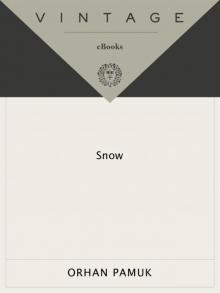 Snow
Snow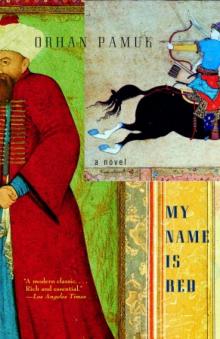 My Name is Red
My Name is Red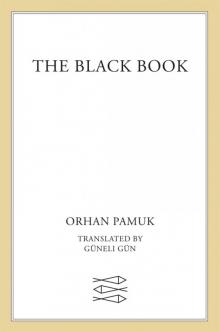 The Black Book
The Black Book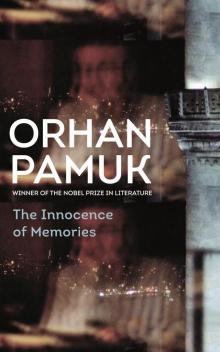 The Innocence of Memories
The Innocence of Memories The White Castle
The White Castle Other Colors
Other Colors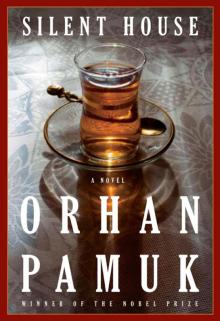 Silent House
Silent House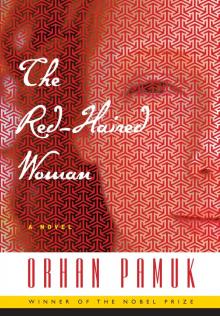 The Red-Haired Woman
The Red-Haired Woman The Museum of Innocence
The Museum of Innocence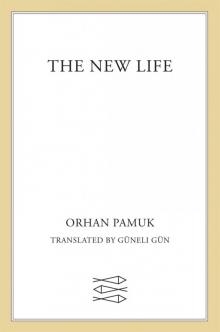 The New Life
The New Life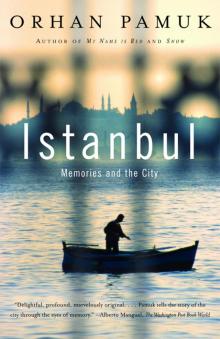 Istanbul
Istanbul